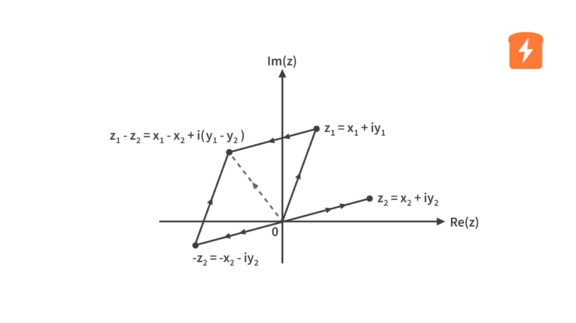What is a variable capacitor diode – how does it work?
Published
In our discussions about diodes, we have learned that a PN junction is a boundary formed between a P-type and N-type semiconductor when they are combined. When a PN junction is formed, an area where charge carriers are depleted is also formed, called the depletion region. Because of the depletion region, the diode develops a “junction capacitance”.
When a reverse bias is applied to the diode, its junction capacitance varies. This characteristic of diode has been taken advantage by engineers to design a special-purpose diode called the Varicap diode. It’s also known sometimes as a varactor diode, variable capacitor or reactance diode, or even a tuning diode, which will become apparent why shortly. We’ll just refer to these things as varicap diodes from here on out, though.
Basic Operation

To easily understand how a varicap diode works, we can imagine it as a capacitor. A capacitor is basically composed of two conductive plates and a dielectric between the plates. Now these parts could also be represented in the varicap diode. The P-type and N-type regions of the diode are the conductive plates, and the depletion region is the dielectric. Because of the resemblance in construction, a diode develops capacitive properties.

Now that we are able to represent the varicap diode as a capacitor, we can now look into the parameters that affect its capacitance. In a capacitor, the capacitance is affected by plate area (A), dielectric constant (Ɛ) and plate separation (d). This is expressed in the formula:

Therefore, the capacitance of a varicap diode could also be expressed in the same formula where:
A - cross-section area of the PN junction or the P-type and N-type material
Ɛ - permittivity of the semiconductor
d - width of the depletion region
You can see that the capacitance goes up as the area increases or if the dielectric constant is bigger, or if the plates are closer together. Conversely, as the area of the plates and the dielectric constant get smaller, or if the distance between the plates increases, the capacitance decreases. In other words, this means that the capacitance of a varicap diode is directly proportional to its junction’s cross sectional area and is inversely proportional to the width of its depletion region. On actual varicap diodes, only the width of the depletion region can be varied to change its capacitance.

As stated earlier, one characteristic of a diode when reverse biased, is that the depletion region varies. When the reverse bias on a varicap diode is increased, the depletion region widens, increasing the separation between the P-type and N-type regions, thus decreasing its capacitance. When the reverse bias is decreased, the depletion region narrows, decreasing the separation between the P-type and N-type regions, thus increasing its capacitance. Therefore, varying the amount of the applied reverse bias on the varicap diode varies its capacitance.

Schematic Symbol
In schematic diagrams, the varicap is usually represented by a diode and capacitor combined. Nominal varicap capacitances are typically available from a few picofarads to several hundred picofarads.

Application
Due to its small capacitance values, varicap diodes are commonly used in high frequency applications. These include applications such as FM modulators, FM synthesizers, voltage-controlled oscillators (VCOs), phase-locked loop circuits (PLLs), satellite receivers, automatic-frequency-control devices, parametric amplifiers, and adjustable bandpass filters. The varicap diode is normally used in a tuning circuit in these mentioned applications, as it functions as a variable capacitor in the circuit.
Here is an example, this is a parallel resonant band-pass filter circuit where a varicap diode is used to adjust the resonant frequency over a specified range.

Here, the varicap diode (D) acts as a variable capacitor, which forms a parallel resonant circuit with the inductor (L). The resonant frequency of a parallel resonant circuit is expressed as:

In this case, the C for capacitance is actually the capacitance of D, the varicap diode. In the circuit, the varicap diode is reverse biased by a voltage source VBIAS through resistor R3. The amount of reverse bias applied to the varicap diode is controlled by the variable resistor R2. Here, R2 is configured to function as a voltage divider, so turning its knob would vary the voltage applied to the varicap diode. Rotating R2’s knob up, increases the reverse bias applied to the varicap, thus, the capacitance of the varicap diode decreases. Using the formula above, the decrease in capacitance will increase the resonant frequency.
On the other hand, rotating R2’s knob down decreases the reverse bias applied to the varicap, thus, the capacitance of the varicap diode increases. Again, as the formula shows, the increase in capacitance will decrease the resonant frequency. Capacitors C1 and C2 in the circuit have negligible effect on the resonant frequency. They’re only there to block the flow of DC current from the voltage source going to the source input and the output load of the circuit.
In this tutorial, we discussed about the varicap diode, and what characteristics of the diode were optimized to develop it. We also discussed how a diode resembles a capacitor, and how it acts as a variable capacitor as the amount of the reverse bias applied to it is changed. We also showed you its schematic symbol, introduced some of its applications, and discussed how it is used in a circuit. If you’ve found this tutorial interesting or helpful, give it a like and if you have any questions, leave it in the comments below. See you in our next tutorial!

Get the latest tools and tutorials, fresh from the toaster.













